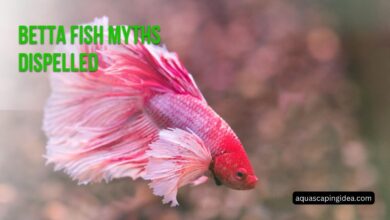How to Get Rid of Malaysian Trumpet Snails?
Malaysian trumpet snails (MTS), scientifically known as Melanoides tuberculata, are a common sight in many aquariums worldwide. While these small, cone-shaped mollusks can serve beneficial purposes in an aquatic ecosystem, they often become a nuisance when their population explodes. This comprehensive guide will explore the nature of Malaysian trumpet snails, their impact on aquariums, and most importantly, provide you with a arsenal of methods to effectively control and eliminate them from your aquatic environment.
Whether you’re a seasoned aquarist or a newcomer to the hobby, understanding how to manage MTS populations is crucial for maintaining a balanced and visually appealing aquarium. Let’s dive into the world of these persistent invertebrates and learn how to reclaim your aquatic paradise.
Understanding Malaysian Trumpet Snails
What Are Malaysian Trumpet Snails?
Malaysian trumpet snails are freshwater mollusks native to northern Africa and southern Asia. They have since spread to many parts of the world, including North and South America, Europe, and Australia. These snails are characterized by their:
- Elongated, cone-shaped shells
- Brown to reddish-brown coloration
- Ability to grow up to 1 inch (2.5 cm) in length
- Preference for burrowing in substrate
The Good, The Bad, and The Ugly
Before we delve into removal methods, it’s important to understand that MTS aren’t entirely detrimental to an aquarium ecosystem. Let’s break down their pros and cons:
Pros:
- Substrate aeration: MTS burrow through the substrate, preventing anaerobic pockets from forming.
- Waste consumption: They feed on detritus and algae, helping to clean the aquarium.
- Indicator species: A sudden population boom can signal overfeeding or poor water quality.
Cons:
- Rapid reproduction: MTS are live-bearers and can reproduce quickly, leading to overpopulation.
- Aesthetic issues: Large populations can cover the substrate, detracting from the aquarium’s appearance.
- Competition for resources: In high numbers, they may compete with other tank inhabitants for food.
- Potential plant damage: While not their primary food source, they may nibble on delicate plants when other food is scarce.
Why Do Malaysian Trumpet Snails Become a Problem?
Understanding the factors that contribute to MTS overpopulation is crucial for effective control:
- Overfeeding: Excess food in the aquarium provides ample nutrition for snail reproduction.
- Poor water quality: High levels of organic waste can create ideal conditions for snail proliferation.
- Lack of predators: Without natural predators, MTS populations can grow unchecked.
- Inadvertent introduction: MTS can enter aquariums as hitchhikers on new plants or decorations.
Strategies for Eliminating Malaysian Trumpet Snails
Now that we understand the nature of MTS, let’s explore various methods to control and eliminate them from your aquarium. We’ll categorize these strategies into natural, chemical, and physical methods, providing you with a comprehensive toolkit to tackle your snail problem.
Natural Methods
1. Biological Control
Introducing natural predators can be an effective and eco-friendly way to manage MTS populations:
- Assassin Snails (Clea helena): These carnivorous snails actively hunt other snails, including MTS. Introduce 1-2 assassin snails per 10 gallons of aquarium water.
- Loaches: Species like Clown Loaches (Chromobotia macracanthus) and Yoyo Loaches (Botia almorhae) are known to feed on snails. However, consider their adult size and compatibility with your existing fish community.
- Pufferfish: Some freshwater puffers, like the Dwarf Puffer (Carinotetraodon travancoricus), eat snails. Be cautious as they may be aggressive towards other fish.
2. Reduce Feeding
Overfeeding is a primary cause of snail overpopulation. Implement these strategies:
- Feed fish only what they can consume in 2-3 minutes
- Remove uneaten food after feeding
- Consider fasting your fish for one day a week to reduce excess nutrients
3. Improve Water Quality
Maintaining pristine water conditions can help control snail populations:
- Perform regular water changes (10-20% weekly)
- Use a gravel vacuum to remove detritus from the substrate
- Ensure your filtration system is adequate for your tank size
4. Manual Removal
While time-consuming, manual removal can be effective:
- Use a snail trap: Place a piece of lettuce or zucchini in the tank overnight and remove it (along with attached snails) in the morning
- Hand-pick snails during water changes or tank maintenance
- Create a “snail bait” by placing food in a small, separate container within the tank and removing it (with snails) after a few hours
Chemical Methods
Caution: Chemical treatments should be used as a last resort, as they can harm beneficial bacteria, plants, and other invertebrates in your aquarium.
1. Copper-based Treatments
Copper is toxic to invertebrates, including snails:
- Use copper sulfate solutions designed for aquarium use
- Follow dosage instructions carefully
- Remove any invertebrates you wish to keep (shrimp, beneficial snails) before treatment
- Be aware that copper can be absorbed by substrate and decor, potentially affecting future invertebrate inhabitants
2. Aluminium Sulfate
This chemical can help control snail populations:
- Dissolve 1 tablespoon of aluminium sulfate per 5 gallons of water
- Soak plants in this solution for 2-3 hours to kill snails and eggs
- Rinse thoroughly before returning plants to the aquarium
3. Snail-specific Treatments
Some commercial products target snails while being safer for other aquarium inhabitants:
- Look for products containing ingredients like metaldehyde or niclosamide
- Always follow manufacturer instructions and remove carbon filtration during treatment
Physical Methods
1. Substrate Removal
A drastic but effective method for severe infestations:
- Remove and dispose of the entire substrate
- Clean the tank thoroughly
- Replace with new, snail-free substrate
2. CO2 Injection
Temporarily increasing CO2 levels can help control snail populations:
- Use a CO2 injection system to raise levels to 30-40 ppm for a few days
- Monitor fish closely for signs of stress
- Gradually return to normal CO2 levels after treatment
3. Temperature Manipulation
MTS are sensitive to temperature changes:
- Gradually raise tank temperature to 90°F (32°C) for 1-2 days
- Ensure your fish species can tolerate this temperature
- Slowly return to normal temperature
4. UV Sterilization
While not directly affecting adult snails, UV sterilizers can help prevent reproduction:
- Install a UV sterilizer in your filtration system
- UV light can kill free-floating snail larvae, reducing population growth over time
Preventing Future Infestations
After successfully eliminating or controlling your MTS population, take these steps to prevent future problems:
- Quarantine new plants and decorations
- Dip new plants in a mild bleach solution (1 part bleach to 19 parts water) for 2-3 minutes, then rinse thoroughly
- Regularly inspect your aquarium for signs of snail eggs or newly introduced snails
- Maintain good water quality and avoid overfeeding
- Consider keeping a small population of assassin snails as ongoing biological control
Comparative Analysis of MTS Elimination Methods
To help you choose the most suitable approach for your aquarium, here’s a comparative table of the various elimination methods:
| Method | Effectiveness | Safety for Fish | Safety for Plants | Ease of Implementation | Long-term Impact |
|---|---|---|---|---|---|
| Biological Control | High | High | High | Medium | Positive |
| Reducing Feeding | Medium | High | High | Easy | Positive |
| Improving Water Quality | Medium | High | High | Medium | Positive |
| Manual Removal | Medium | High | High | Time-consuming | Neutral |
| Copper Treatments | High | Medium | Low | Easy | Negative |
| Aluminium Sulfate | Medium | Medium | Medium | Medium | Neutral |
| Substrate Removal | High | Medium | Low | Difficult | Neutral |
| CO2 Injection | Medium | Medium | High | Medium | Neutral |
| Temperature Manipulation | Medium | Medium | Medium | Easy | Neutral |
| UV Sterilization | Low | High | High | Easy | Positive |
Frequently Asked Questions
Are Malaysian trumpet snails harmful to fish?
Generally, MTS are not harmful to fish. However, in large numbers, they can compete for resources and potentially stress fish indirectly.
How quickly can MTS reproduce?
MTS are live-bearers and can reproduce rapidly. A single snail can produce up to 70 offspring per year under ideal conditions.
Will MTS eat my aquarium plants?
MTS primarily feed on detritus and algae. They may nibble on soft, decaying plant matter but generally do not harm healthy plants.
Can I use table salt to kill MTS?
While salt can be effective against snails, it’s not recommended for freshwater aquariums as it can harm fish and plants.
How long does it take to eliminate an MTS infestation?
The time frame varies depending on the method used and the severity of the infestation. It can take anywhere from a few weeks to several months to fully control an MTS population.
Conclusion
Malaysian trumpet snails, while beneficial in small numbers, can quickly become a nuisance in aquariums. By understanding their biology and implementing a combination of natural, chemical, and physical control methods, you can effectively manage and eliminate MTS populations from your aquatic environment.
Remember that prevention is key. Maintain good water quality, avoid overfeeding, and quarantine new additions to your tank to keep MTS and other unwanted inhabitants at bay. With patience and persistence, you can reclaim your aquarium and create a balanced, thriving ecosystem for your aquatic pets.
Whether you choose biological control methods like assassin snails, opt for manual removal, or resort to chemical treatments as a last resort, always consider the overall health of your aquarium ecosystem. Each method has its pros and cons, and the best approach often involves a combination of strategies tailored to your specific situation.
By following the guidelines in this comprehensive guide, you’ll be well-equipped to tackle any MTS infestation and maintain a beautiful, snail-free aquarium for years to come. Happy fishkeeping!



